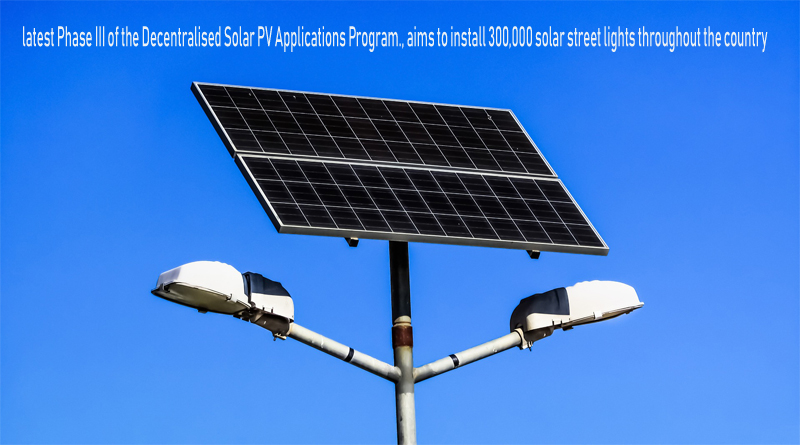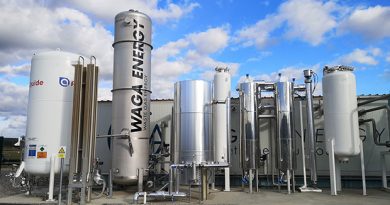118 MW Phase III of Decentralised Solar Program Planned by MNRE
 118 MW Phase III by MNRE
118 MW Phase III by MNRE
The Ministry of New and Renewable Energy (MNRE) has revealed plans to install close to 118 MW of solar capacity through off-grid solar photovoltaic projects by March 31, 2020, as a part of the latest Phase III of the Decentralised Solar PV Applications Program.
The program aims to install 300,000 solar street lights throughout the country, with areas where there are no grid-tied street lighting systems being given special emphasis as a part of this project. This will include the North Eastern States and Left-Wing Extremism (LWE) affected districts. Besides this, the program will also look to set up multiple 25 KW solar projects in regions which lack access to grid connections or unreliable power supply. The mini projects will be developed in community complexes like public schools, hospitals, police stations, panchayats and similar public service institutions.
The project will also aim to provide 25,00,000 solar study lamps in North Eastern States districts to school going children, up to the level of SSC, in backward and remote areas in North Eastern states and LWE affected districts. The latest phase of the program which works under the Jawaharlal Nehru National Solar Mission (JNNSM) was assigned a budget worth over ₹656 crores after the approval was received from the president for the continuation of the program in Phase III for the financial year (FY) 2018-19 and FY 2019-20.

In FY 2018-19, the deployment of 50 MW is being considered with an outlay of ₹276 crores. In FY 2019-20, installation of 68 MW with an outlay of ₹380 crores is being targeted.
Other key highlights of the initial project draft were:
- Central financial assistance (CFA) will be provided in the general category states for solar street lights and solar power projects. The assistance will be 30 percent of the benchmark cost of the system or the tender cost, whichever is lower.
- In the North Eastern States including Sikkim, Jammu & Kashmir, Himachal Pradesh, Uttarakhand, Lakshadweep and Andaman & Nicobar Islands, CFA of 90 percent of the benchmark cost or tender cost will be provided, whichever is lower.
- For solar study lamps, a CFA of 85 percent of the lamp cost will be provided and the remaining 15 percent balance will be borne by the beneficiary student.
- A total of 3 percent of the eligible CFA will be provided as service charges to the implementing agencies. The Implementing agency will not impose any additional charges on beneficiaries and/or vendors for the implementation of projects under this program.
- Allocation for solar street lights and solar study lamps will be done by a screening committee, headed by secretary, MNRE, in one session after calculating the demand from the states/UTs.
The minister for Power and renewable Energy, Mr R.K. Singh, has in fact been regularly sharing success stories for this category regularly, as his recent tweets indicate here.
#UJALA illuminates #Jammu & #Kashmir by #EnablingMore #EnergyEfficiency & rural growth. Our teams have distributed #EnergyEfficient #LED bulbs across 40 villages in #Baramullah and #Kupwara districts under extended #GramSwarajAbhiyan. @RajKSinghIndia @MinOfPower @BhallaAjay26 pic.twitter.com/WaMmZD02P3
— EESL India (@EESL_India) August 12, 2018
Traveling across previously underserved rural areas, we have brought transformation to the Risor and Abra tola villages of #Sahebganj district in #Jharkhand with access to high-quality, affordable and #energyefficient lighting. @RajKSinghIndia @MinOfPower @BhallaAjay26 pic.twitter.com/svBYGD9yGj
— EESL India (@EESL_India) August 10, 2018
The program will come in to effect from the date of issue of administrative approval along with its operational guidelines.




